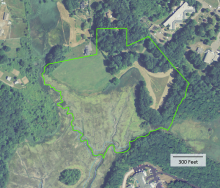Basic Project Information
City/Town/Village
Branford
County
New Haven
Site Name
Kaczynski Property
Habitat Types
| Habitat | Acres | Miles | Feet |
|---|---|---|---|
| Acquisitions/Easements | 22.00 | 0.00 | 0.00 |
| TOTAL | 22.00 | 0.00 | 0.00 |
Completed
Project Urls
Funding
Funding Sources
| Funding Organization | Funding Program | NFWF-LISFF Funded Amount | Amount Awarded | Amount Spent |
|---|---|---|---|---|
| Branford Land Trust | ||||
| Town of Branford | ||||
| Connecticut Department of Energy & Environmental Protection - Open Space & Watershed Land Acquisition Grant Program | ||||
| United States Fish and Wildlife Service - National Coastal Wetlands Conservation Grant Program |
Specific Project Information
Project Partners
Partners Organization
Town of Branford
Partners Organization
Branford Land Trust
Partners Organization
Connecticut Department of Energy & Environmental Protection - Wildlife Division
Partners Organization
Connecticut Department of Energy & Environmental Protection - Office of Long Island Sound Programs
Cause of Degradation
Development Risk
Degradation Description
Located next to the most densely populated section of Branford, the upland section of this parcel was under threat of development. The property has a mix of densely wooded coastal forest, salt marsh, and a herbaceous transition zone in between. This transitional area is a prime example of a marsh advancement area - an area to which tidal marshes will migrate as sea level continues to rise.
Project Description
The Kaczynski property has been a high priority target for conservation since 1972. This acquisition increases the protected portion of the Farm River estuary by more than 10%, and preserves the viewscape from the Beacon Hill preserve and Shoreline Trolley Museum rail line.
This site is located within the New Haven Harbor Atlantic Coast Joint Venture Waterfowl Focus Area. Goals for this Focus Area include acquisition of the roughly 500 acres of privately held tidal wetlands. This parcel and the associated estuarine habitats in Branford Harbor contain the largest concentrations of wintering American wigeon (Anas americana) in Connecticut and also hold regionally significant numbers of wintering canvasback (Aythya valisineria), scoter (Melanitta sp), and Atlantic brant (Branta bernicla hrota). Maintaining the property in its current undeveloped state will also protect the water quality in the Farm River, which supports an important anadromous fish run (alewife, blue-back herring, sea-run brown trout, and sea lamprey).
Restoration Technique
Land Acquisition
Waterbody
Farm River
